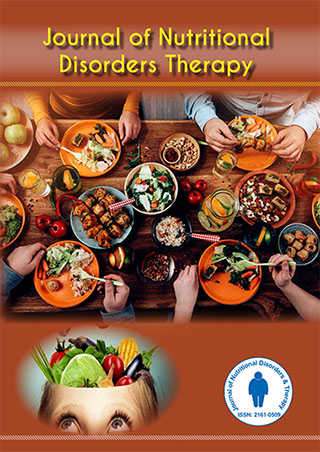索引于
- 打开 J 门
- Genamics 期刊搜索
- 学术钥匙
- 期刊目录
- 乌尔里希的期刊目录
- 参考搜索
- 哈姆达大学
- 亚利桑那州EBSCO
- OCLC-WorldCat
- 普布隆斯
- 日内瓦医学教育与研究基金会
- 欧洲酒吧
分享此页面
期刊传单

抽象的
临床营养学 2020:根据证据权重对营养健康声明进行分级将使公众更加知情 - Francois Andre Allaert - CEN Nutriment Dijon
弗朗索瓦·安德烈·阿拉尔
在欧洲法规 1924/2006 中,尤其是其第一部分,引入了欧洲食品安全局 (EFSA) 对健康声明 (HC) 的评估,以“确保高水平的消费者保护,[并] 为消费者提供必要的信息,让他们在充分了解事实的情况下做出选择”。现在,自该法规通过以来已有 10 年的历史,我们可以问一问,导致接受声明数量微乎其微的 EFSA HC 评估过程是否符合这一目标,不仅是为了保护消费者,而且是为了让他们自由地做出决定并做出明智的选择。
本文的目的是证明,在评估 EFSA 对 HC 的科学依据时加入证据权重排序,将使消费者受益于 EFSA 执行的极高标准的科学评估。
EFSA 目前的立场是,只授权那些显示有充分证据证明 其健康益处的产品使用健康声明,这一标准与药品要求的水平相当。这种方法确实可以实现高水平,甚至是最高水平的消费者保护。但这种极端主义立场与药品营销授权原则非常接近,是否符合欧洲消费者信息法规的理念?这是值得怀疑的,因为目前分配的声明只向消费者提供有关已根据药品标准证实其益处的产品的信息。如果膳食补充剂和强化食品所能提供的所有益处都可以通过此类标准证实,那么这将是可以接受的。然而,正如下一节所论证的那样,情况并非总是如此,许多健康产品和服务都是如此。但为什么消费者应该被剥夺所有来自学术界和工业界研究的普遍接受的科学知识呢?这是否符合“知情”消费者愿意做出自由选择的原则 ?此外,这种对健康声明(批准/未批准)的高度二元化立场是否会误导消费者,因为消费者无法区分所有未经授权但有健康声明的产品,这些产品有强有力的证据支持,而这些产品完全是虚构的,但不幸的是,尽管有现有的欧洲法规,这些产品仍在不受监管的网站上推广?令人担心的是,由于EFSA 的“全黑口服”评估,信息缺失可能会导致消费者信息不足或被误导(访问错误的网站、误用某些健康信息等)。在目前的制度下,绝大多数产品最终都没有达到应有的宣传效果,这意味着消费者继续对没有宣传的产品不予置评,而其中一些产品有强有力的论据支持其使用,而另一些产品则完全没有论据。通过扩大带有授权宣传的产品范围,其级别将根据证据的权重进行分级,消费者将获得更好的信息并能够行使se their own free willing full knowledge of the facts. This would enable them to make thoughtful choices and especially in areas where no formal claim is currently available. It is towards this kind of solution that the Food and Drug Administration in the USA has turned for years now, under the impetus of constraints from a law suit with a manufacturer. Perhaps there is no need to wait so long to make changes to the idea of health claims in Europe.
Theîlimitsîofîrandomizedîclinicalîtrialsîinînutritionalîevaluationîî
Selectionîcriteriaî
The true target population is often a population experiencing discomfort or with a risk factor of illness but not the entire population. The idea of healthy population must change a minimum of in what's meant by the term “healthy”. However, in order to show the existence of a clinical benefit, some discomfort should actually be present and/or a biological parameter actually be disturbed either by short fall or surfeit. Everything then hangs on the definition and assessment that separates the physiological and the pathological states. Limits have been set for many metabolic risk factors such as the level of glycaemic or lipid parameters, but they are somewhat artificial and it is known that the progression of risk with biological factors is a continuum. However, to be able to show a difference in the effect of a product versus a placebo or an identical matrix without the added ingredient, it is necessary for sufficiently intense discomfort to be present or for a biological parameter to have available a large enough room for potential improvement. This is one of the great difficulties in demonstrating the effectiveness of dietary supplements or enhanced food stuffs. The margins for improvement are rather narrow, making improvement difficult to demonstrate and requiring very large numbers in each group. These selection criteria also raise the issue of the population under consideration and many claims are rejected on the grounds that the population in the trial does not correspond to the general population, particularly in the area of joint discomfort. Should it not be considered that by definition, the clinical trial is an experimental situation that does not correspond to a common life situation, particularly because of other inclusion and exclusion criteria that are used to limit risks or a void interference with the parameters under study, and therefore it is a model devised to demonstrate efficacy.
通常只有在观察性研究中,才能真正观察到日常实践中提供的健康益处。一种思路可能是接受实验证据,并将其与索赔(可能是“B”级)的发布相结合,将其与在重新评估索赔的背景下提供日常实践数据的需要相匹配。这种情况现在在医疗器械和药物领域很常见,几乎任何营销授权或任何列入健康保险计划退款产品清单的产品都需要提供具体的好处证据。也可以想象,与其在至少两项临床研究中证明效果,不如进行临床研究和对大量人群的观察性研究。这种立场在纯统计意义上可能不太合理,但可以更具体地评估产品,因为临床试验由于其受控特性而无法评估。这些因素将在以下小节中展开。
证明标准的定义是一种普遍的做法,其依据的原则是,对健康实践的评估应从各种描述的角度来理解,从高强度双盲安慰剂对照研究的正式证明到基于专家共识或专业人士之间协议的排名。证据权重的评级——而不是科学专业知识的评级——在卫生当局或学术团体的建议或共识会议中随处可见。这种方法将刺激研究和产品创新,因为工业界将看到积极的投资回报。从全有或全无的健康声明体系过渡到按证据权重评级的体系将成为当前体系的替代方案。这种方法将更符合欧洲法规的原理,该法规旨在通过让消费者有机会在充分了解事实的情况下行使自由意志,为消费者提供尽可能最好的信息,并促进符合可靠科学和医学依据的研究,为此类信息提供基础。
注:本研究部分成果于 2017 年 6 月 29 日至 30 日在西班牙马德里举行的第 11 届欧洲营养与饮食学会议上发表